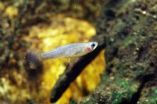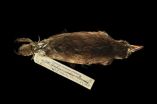(Press-News.org) Galician researchers have studied the evolution in the introduction of non-native fresh water species in Galicia over the past century, and have compared this with the rest of the Iberian Peninsula. The results show that 31 exotic aquatic species out of the 88 recorded for the entire Iberian Peninsula have become established in the region over the past century.
An analysis of the introduction of non-native species in Galicia and the Iberian Peninsula carried out by researchers from the University of Santiago de Compostela (USC) and the University of Coruña (UDC) has shown not only the number of species introduced over the past 100 years, but also the periods during which the greatest number of new species appeared, and also current trends.
It has taken longer for exotic species to be introduced in Galicia than in the rest of the Iberian Peninsula. "While the species introduced in the Iberian Peninsula at the start of the 20th Century took between 80 and 90 years to be recorded in Galicia, this delay has been virtually negligible since the 1990s", María J. Servia, coordinator of the study and a researcher at the UDC, tells SINC.
According to Servia, species introduced in the Iberian Peninsula are now detected at "practically" the same time in Galicia. The data analysed show that 1995 marked a turning point, coinciding with the approval of the Schengen Treaty, which opened up the borders of European countries to the free movement of people and goods. From this time on, the pace of introduction of new species in Galicia has been the same as for the rest of Spain.
The study, which has been published in Biodiversity and Conservation, also shows that 31 exotic aquatic species out of the total of 88 recorded throughout the Iberian Peninsula as a whole have become established in Galicia, including fish, amphibians, insects, plants, molluscs, invertebrates, reptiles, mammals and crustaceans.
Some of the most significant exotic species introduced in Galicia include the Asian clam (Corbicula fluminea), the red swamp crayfish (Procambarus clarkii), the mosquitofish (Gambusia holbrooki), and aquatic plants such as Elodea canadensis and the water hyacinth (Echhornia crassipes).
Introduction of invertebrates and plants on the rise
"Although the introduction of new vertebrate species has slowed down, the entry of new invertebrate and plant species has continued to increase over recent years, with many of these coming from the aquarium trade", says Fernando Cobo, lead author of the study and director of the USC Hydrobiology Station.
The researchers are calling for this kind of trade to be regulated as a matter of "urgency", since "there is still a perception that exotic plants and invertebrates, except in exceptional cases, are inoffensive".
The biologists say that invasive species pose a "serious" threat to the conservation of biodiversity in the areas they establish themselves in, because they compete with native species for both habitat and food. "Freshwater courses have not been immune to this problem", say the authors of the study, who add that the building of large hydraulic infrastructures have made a "major" contribution to the phenomenon.
Because of its climatic and geographical characteristics, Galicia has a large wealth of freshwater species, many of which are endemic to the region. Until now, the introduction of non-indigenous species in the region has been "relatively" slow, because of its geographical isolation and the small size of its river basins, which do not allow for commercial shipping. However, over recent decades an increasing number of exotic species have appeared in Galician waters.
INFORMATION:
References:
Cobo, Fernando; Vieira-Lanero, Rufino; Rego, Enrique; Servia, Maria J. "Temporal trends in non-indigenous freshwater species records during the 20th century: a case study in the Iberian Peninsula" Biodiversity and Conservation 19(12): 3471-3487, noviembre de 2010.
More than 31 freshwater species have 'moved' to Galicia over past century
2011-01-14
ELSE PRESS RELEASES FROM THIS DATE:
Scientists sequence gut microbes of premature infant
2011-01-14
Scientists have for the first time sequenced and reconstructed the genomes of most of the microbes in the gut of a premature newborn and documented how the microbe populations changed over time.
Further studies involving more infants could eventually help researchers understand the causes of various intestinal problems that afflict preemies, in particular the sometimes fatal necrotizing enterocolitis, according to researchers at the University of California, Berkeley, the University of Pittsburgh School of Medicine and Stanford University. One unresolved question is whether ...
MIT neuroscientists explain 'Proustian effect' of small details attached to big memories
2011-01-14
CAMBRIDGE, Mass. – Neuroscientists at MIT's Picower Institute of Learning and Memory have uncovered why relatively minor details of an episode are sometimes inexplicably linked to long-term memories. The work is slated to appear in the Jan. 13 issue of Neuron.
"Our finding explains, at least partially, why seemingly irrelevant information like the color of the shirt of an important person is remembered as vividly as more significant information such as the person's impressive remark when you recall an episode of meeting this person," said co-author Susumu Tonegawa, Picower ...
Breaking point: LSU professor discovers method to determine when metals reach end of life
2011-01-14
BATON ROUGE – We live in a world almost completely dependent upon machinery. Since the creation of the simple wheel, humans have found ways to increase quality of life and advance scientific knowledge using these devices. Though the prevalence of machinery has allowed us to build bigger, travel faster and create more quickly with complexity increasing as science advances, our dependence upon them has limitations. Everything that moves can and will break, especially metals under strain. And when they fail, the consequences can be catastrophic. LSU's Michael Khonsari has ...
The best way to measure dark energy just got better
2011-01-14
Dark energy is a mysterious force that pervades all space, acting as a "push" to accelerate the Universe's expansion. Despite being 70 percent of the Universe, dark energy was only discovered in 1998 by two teams observing Type Ia supernovae. A Type 1a supernova is a cataclysmic explosion of a white dwarf star.
These supernovae are currently the best way to measure dark energy because they are visible across intergalactic space. Also, they can function as "standard candles" in distant galaxies since the intrinsic brightness is known. Just as drivers estimate the distance ...
AGU journal highlights -- Jan. 13, 2011
2011-01-14
The following highlights summarize research papers that have been recently published in Geophysical Research Letters (GRL).
In this release:
Spooky action at a distance, for earthquakes
Evidence for water ice near the Martian equator
Extraordinary uplift of Yellowstone caldera
New evidence could let supereruption off the hook
Auroral oscillations seen on Saturn
How much sea-level rise can coastal marshes withstand?
Rain affects carbon-dioxide flow between sky and sea
Ionosphere model overshoots during solar minimum
Anyone may read the scientific abstract for ...
Cattle health and welfare at the heart of K-State research
2011-01-14
MANHATTAN, KAN. -- At any given time between 10 and 20 percent of cattle in the United States are afflicted with lameness, making it one of the most common ailments affecting feedlot and stocker calves.
That's why a Kansas State University research team is working to reduce the percentage of cattle affected by bovine lameness.
Three researchers -- David Anderson, professor of clinical sciences; Brad White, associate professor of clinical sciences; and Johann Coetzee, associate professor of clinical sciences -- are involved with bovine pain and welfare assessment at ...
Physicists discover Crab nebula is slowly dimming
2011-01-14
BATON ROUGE – The Crab Nebula, once considered to be a source of energy so stable that astronomers used it to calibrate their instruments, is dimming. LSU physicists Mike Cherry, Gary Case and graduate student James Rodi, together with an international team of colleagues using the Gamma-ray Burst Monitor, or GBM, on NASA's Fermi gamma-ray space telescope, discovered the anomaly. This revelation has proven astonishing for astronomers.
The Crab Nebula, one of the most studied objects in the sky, is the wreckage of a star that exploded in 1054. Considered a cornerstone of ...
100-year-old specimens at California museum help determine when avian pox hit Galapagos
2011-01-14
A research team from across the United States and Ecuador has pinpointed 1898 as the year the avipoxvirus, or avian pox, hit the Galapagos Islands and started infecting its birds. This estimation is vital to understanding avian diseases that affect today's Galapagos birds. The scientists' paper on the subject, "110 Years of Avipoxvirus on the Galapagos Islands," will be published on January 13 in PLoS ONE, an international, open-access science publication.
The research team, led by Dr. Patricia Parker of the University of Missouri–St. Louis, examined 3,607 finches and ...
Chandra images torrent of star formation
2011-01-14
A new Chandra X-ray Observatory image of Messier 82, or M82, shows the result of star formation on overdrive. At a distance of only 12 million light years, M82 provides a unique cosmic laboratory for studying conditions similar to those that existed billions of years ago when stars were forming at a furious rate in most galaxies.
M82 is a so-called starburst galaxy, where stars are forming at rates that are tens or even hundreds of times higher than in a normal galaxy. The burst of star birth may be caused by a close encounter or collision with another galaxy, which ...
Researchers learn why PSA levels reflect prostate cancer progression
2011-01-14
DURHAM, N.C. — Researchers at the Duke Cancer Institute who have been studying prostate cancer cells for decades now think they know why PSA (prostate-specific antigen) levels reflect cancer progression.
"This is the first demonstration of a mechanism that explains why PSA is a bad thing for a tumor to produce," said senior author Sal Pizzo, M.D., Ph.D., chair of the Duke Department of Pathology. "I am willing to bet there is also a connection in cancerous cell growth with this particular biological signaling mechanism happening in other types of cells."
Using human ...


